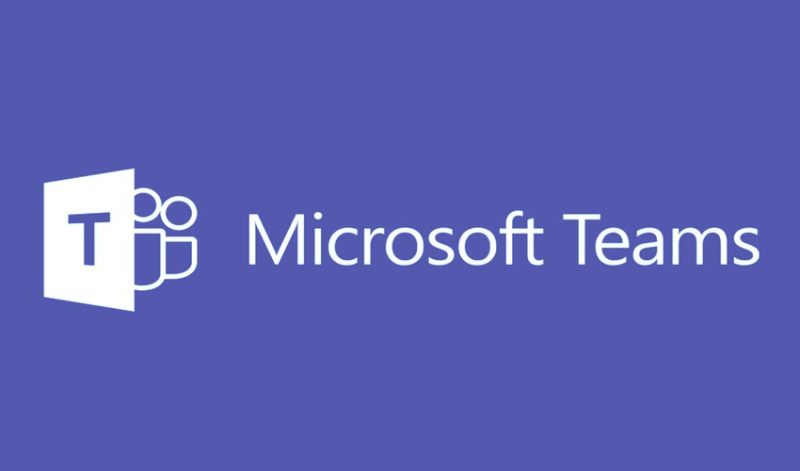In today’s fast-paced business landscape, collaboration has taken center stage as a driving force behind innovation and productivity. The ability to work seamlessly with colleagues, regardless of geographical boundaries, is no longer a luxury but a necessity. Enter Microsoft Teams, a versatile collaboration platform that revolutionizes how teams communicate, share information, and work together. As businesses increasingly shift to remote and hybrid work environments, Microsoft Teams emerges as a linchpin, fostering a collaborative work culture that thrives on real-time interactions, shared documents, and cohesive teamwork.
- 1. Streamlined Communication & Instant Messaging
Clear and instantaneous communication is the cornerstone of any collaborative work culture. Microsoft Teams empowers this aspect by providing a centralized hub for instant messaging and communication. Its real-time messaging feature enables colleagues to exchange information, ideas, and updates in the blink of an eye. Threaded conversations ensure that discussions remain organized, allowing team members to effortlessly catch up on ongoing dialogues. The integration of emojis, gifs, and reactions add a touch of personality to interactions, making them more engaging and relatable. In a world where communication drives productivity, Microsoft Teams excels in providing a streamlined channel for meaningful and efficient exchange
- 2. Seamless Document Collaboration & Sharing
Collaboration is incomplete without effective document sharing and co-authoring. Microsoft Teams addresses this need by creating a collaborative workspace where documents become living entities, evolving through the input of various team members. Teams seamlessly integrate with Microsoft 365 apps like Word, Excel, and PowerPoint, enabling multiple individuals to collaborate on a single document simultaneously. This real-time co-authoring eliminates the back-and-forth of emailing files and consolidates changes in one central location. Version control ensures that the evolution of documents is tracked, avoiding confusion and preserving the integrity of the content. Whether it’s brainstorming sessions, project proposals, or data analysis, Microsoft Teams transforms document collaboration into a dynamic and productive experience.
- 3. Virtual Meetings & Video Conferencing
In an era where remote work is the new norm, virtual meetings, and video conferencing have become essential for maintaining team cohesion. Microsoft Teams excels in this realm by offering a robust platform for hosting virtual meetings. With audio and video call capabilities, screen sharing, and real-time collaboration on shared documents, Teams recreates the essence of face-to-face interactions. Scheduling meetings and inviting participants is seamless, ensuring that teams can gather virtually at a moment’s notice. By bridging geographical gaps and allowing team members to connect visually, Microsoft Teams nurtures a collaborative work culture that transcends physical boundaries
- 4. Team Channels & Information Organization
The challenge of organizing discussions and documents around specific topics or projects is met head-on by Microsoft Teams’ team channels. These dedicated spaces allow teams to compartmentalize their discussions and files, creating an organized and focused environment. By keeping conversations contextually relevant and files easily accessible within a specific channel, teams eliminate the clutter and confusion often associated with dispersed information. This organized structure not only enhances productivity but also encourages active participation and contribution within a well-defined context.
- 5. Integration with Third-Party Apps & Services
Collaborative work extends beyond communication and document sharing. Microsoft Teams acknowledges this by integrating seamlessly with an array of third-party apps and services. From project management tools to CRM systems and customer support platforms, these integrations amplify Teams’ capabilities. These apps bring external tools directly into the Teams environment, streamlining workflows and consolidating information. The result is a holistic workspace that empowers teams to work with their preferred tools while maintaining a centralized hub for collaboration.
In the upcoming sections, we’ll delve into how Microsoft Teams supports mobile collaboration, automates tasks, and encourages a culture of collaboration through various features. By harnessing these capabilities, organizations can elevate their collaborative work culture and empower their teams to work more efficiently and effectively. Stay tuned for insights on maximizing the potential of Microsoft Teams in your work environment.
- 6. Mobile Collaboration & On-the-Go Productivity
In the modern work landscape, mobility is key. Microsoft Teams recognizes this by offering mobile apps for smartphones and tablets, extending collaboration beyond the confines of the desktop. These mobile apps empower team members to stay connected, participate in discussions, and access documents while on the move. Whether it’s checking in on a project’s progress or joining a video call from a remote location, Teams’ mobile apps ensure that productivity remains unhampered. This mobility not only enhances individual efficiency but also reinforces the collaborative work culture, allowing teams to engage in real-time interactions regardless of their physical location.
- 7. Automation & Customization with Bots & Workflows
Efficiency is the backbone of collaborative work, and Microsoft Teams raises the bar by integrating automation and customization into its platform. Bots and workflows simplify routine tasks, freeing up valuable time for more strategic endeavors. Teams’ integration with Microsoft Power Automate enables the creation of customized workflows that automate repetitive processes. Bots can facilitate quick answers to frequently asked questions, ensuring that communication remains swift and informative. By minimizing manual effort and enhancing productivity, Teams transforms the way teams operate, fostering a culture that values innovation and resourcefulness.
- 8. Promoting a Collaborative Work Culture with Microsoft Teams:
Microsoft Teams isn’t just a tool; it’s a catalyst for nurturing a collaborative work culture. By offering a seamless platform for communication, document sharing, virtual meetings, and integration with external tools, Teams empowers teams to work harmoniously and cohesively. Its user-friendly interface and intuitive features ensure that every team member can contribute their expertise effortlessly, promoting a sense of inclusivity and shared responsibility.
Conclusion
In an era where collaboration is the heartbeat of success, Microsoft Teams emerges as a beacon of empowerment. Its suite of features—streamlined communication, seamless document collaboration, virtual meetings, and beyond—transform the way teams operate. By embracing Microsoft Teams, organizations create an environment that thrives on open communication, innovation, and collective progress. As the lines between physical and virtual workspaces blur, Microsoft Teams becomes more than a platform; it’s the driving force that shapes collaborative work cultures and propels businesses toward greater achievements.
The journey of collaborative transformation doesn’t end here. With the potential to integrate with emerging technologies and adapt to evolving work trends, Microsoft Teams is poised to continually enhance the collaborative work culture of tomorrow. So, take the first step, harness its capabilities, and embark on a collaborative journey that reshapes how work gets done.
Author Bio
Sam Khan is a digital marketer at Code Creators Inc., a SharePoint development company in the USA and Canada which is dealing with software development, Power BI, SharePoint Online, Microsoft Teams, mobile app, IT services, and more. Connect with him on Facebook, Twitter, and Codecreators.ca

Aimee Garcia is a senior editor at ReadDive. She has 5+ years of experience in Digital Marketing. She has worked with different IT companies.





